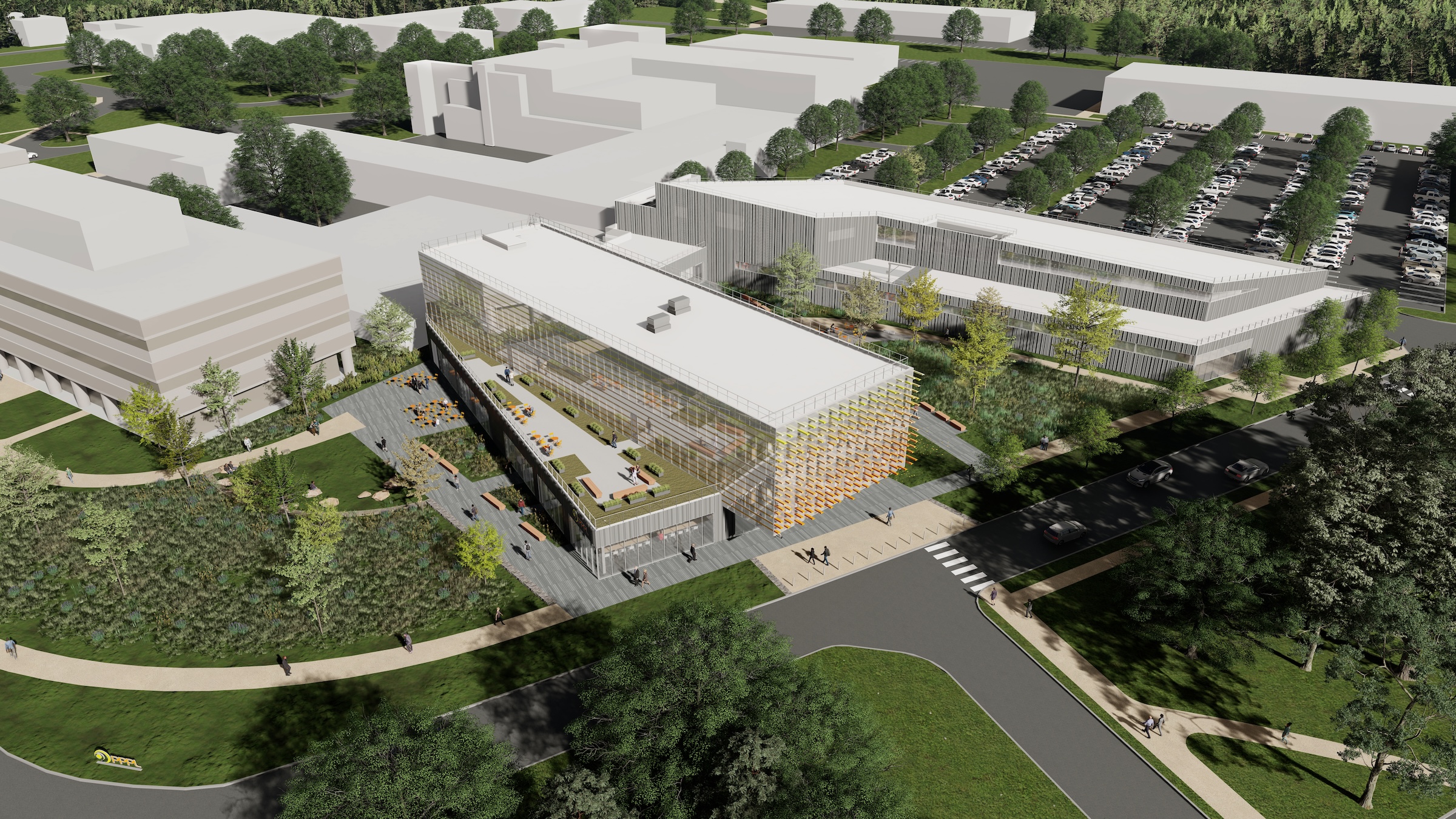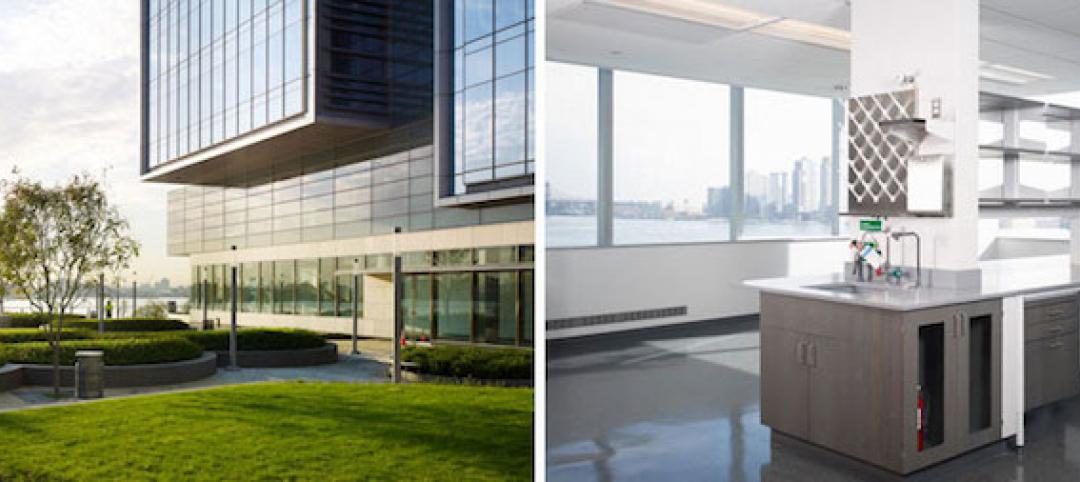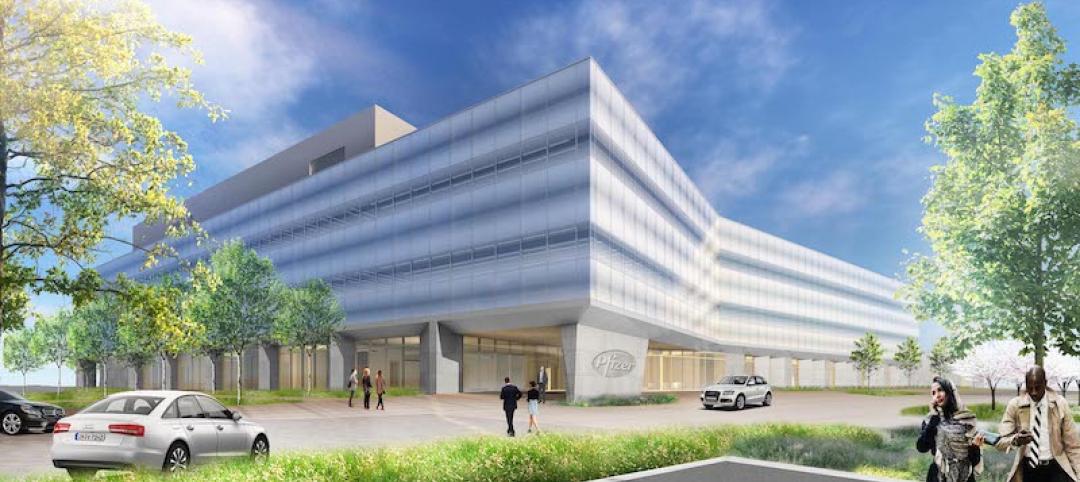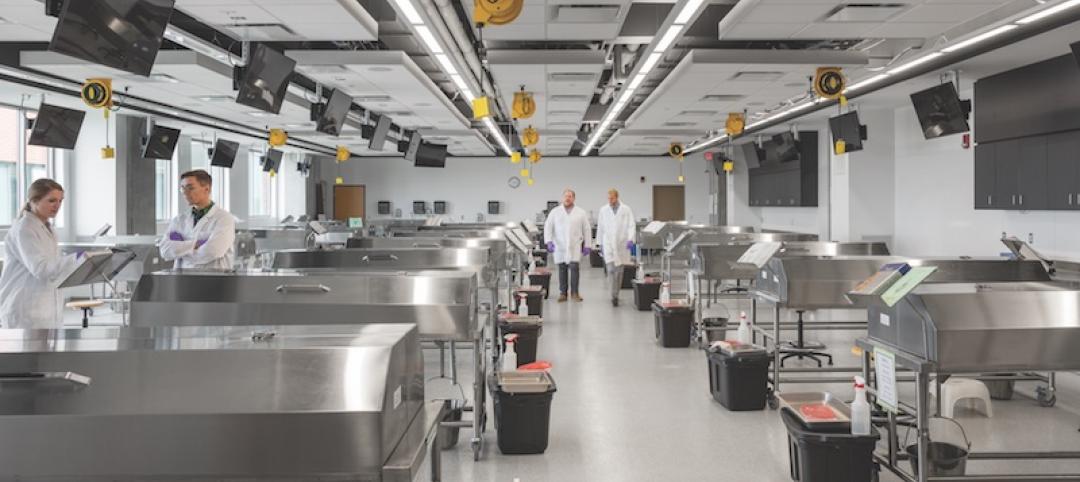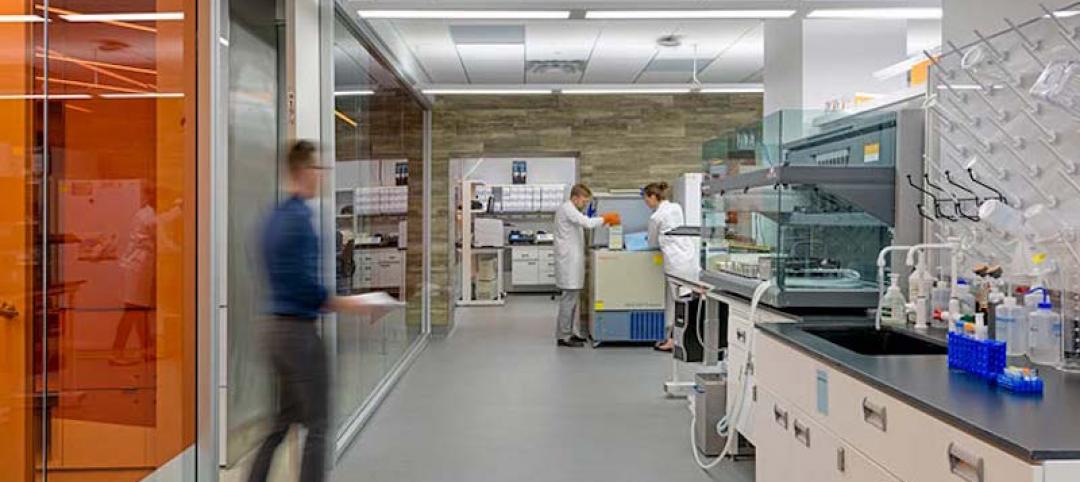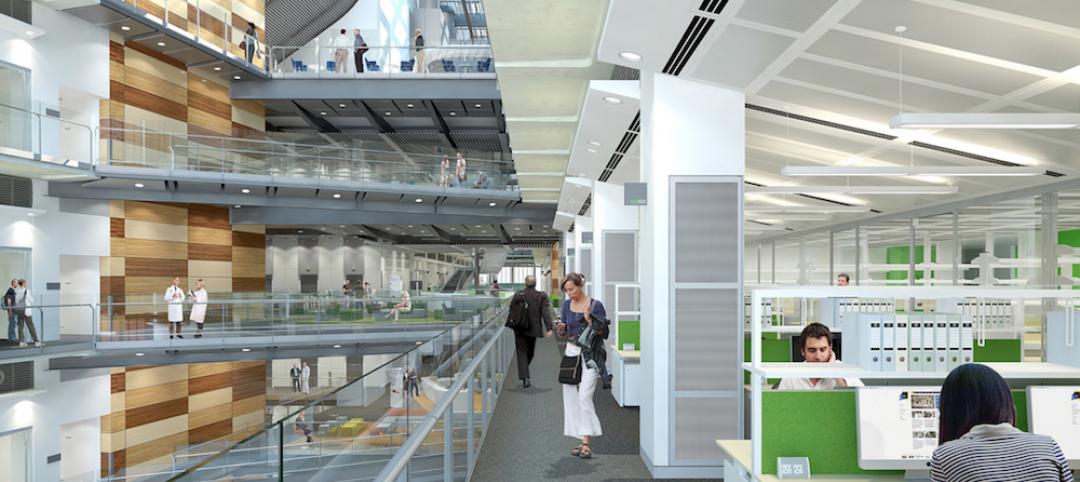In Princeton, N.J., the U.S. Department of Energy’s Princeton Plasma Physics Laboratory (PPPL) has broken ground on the Princeton Plasma Innovation Center (PPIC), a state-of-the-art office and laboratory building.
Designed and constructed by SmithGroup, the $109.7 million facility will provide space for research supporting PPPL’s expanded mission into microelectronics, quantum sensors and devices, and sustainability sciences. PPIC also will help the organization contribute research toward President Biden’s “Bold Decadal Vision for Commercial Fusion Energy.”
The first new building at PPPL in several decades, the 68,000-sf center will replace two buildings dating to the 1950s. The high-performance, sustainable building aims to be LEED Gold certified and a zero-carbon emissions building.
In addition to providing lab space, PPIC will have remote collaboration space and a virtual reality cube where PPPL scientists can communicate with research partners around the world. The building also will provide PPPL’s science education team a new lab for training the next generation of scientists.
In the U-shaped building, the north wing will feature a collaborative first floor where visitors enter, while the second and third floors will be dedicated mostly to office space for about 170 staff members. The laboratory wing to the south will have 10 medium-bay laboratories and 13 small-bay laboratories on the ground floor.
At the intersection of the north and south wings, the café will feature retractable walls on each side that open to the courtyard and the north garden, as will the science education lab and first-floor meeting rooms. A roof garden will sit north of the building entrance.
In line with the project’s focus on sustainability, glass will be used extensively to maximize daylight for the offices and reduce the use of electric lights. At the same time, colorful shades will reduce direct heat and glare from the sun by 88%, mitigating the need for air conditioning.
A geothermal exchange system, which will be dug 500 ft below ground between the north and south wings, will extract heat from the building in the summer and store it underground to heat the building in the winter. The system will provide about two-thirds of the building’s heating and cooling.
The project is primarily funded by the DOE’s Science Laboratories Infrastructure program, while Princeton University contributed $10 million for preconstruction work.
On the Building Team:
Owner: U.S. Department of Energy’s Princeton Plasma Physics Laboratory (PPPL)
Design architect, architect of record, and MEP and structural engineer: SmithGroup
Civil engineer: Van Note-Harvey Division of Pennoni
General contractor: INTECH Construction
Related Stories
Laboratories | Sep 12, 2017
New York City is positioning itself as a life sciences hub
A new Transwestern report highlights favorable market and regulatory changes.
Laboratories | Aug 3, 2017
Today’s university lab building by the numbers
A three-month study of science facilities conducted by Shepley Bulfinch reveals key findings related to space allocation, size, and cost.
Laboratories | Jul 18, 2017
Pfizer breaks ground on new R&D campus in St. Louis suburb
The facility will consolidate the company’s local workforce, and provide flexible work and research spaces.
Building Team Awards | Jun 12, 2017
The right prescription: University of North Dakota School of Medicine & Health Sciences
Silver Award: North Dakota builds a new medical/health sciences school to train and retain more physicians.
Laboratories | Apr 13, 2017
How to design transformative scientific spaces? Put people first
While most labs are designed to achieve that basic functionality, a transformational lab environment prioritizes a science organization’s most valuable assets: its people.
Laboratories | Sep 26, 2016
Construction has finished on the world’s largest forensic anthropology lab, designed by SmithGroupJJR
The lab’s main purpose will be to help in the investigation, recovery, and accounting of Americans lost in past wars.
Laboratories | Aug 8, 2016
The lab of the future: smaller, flexible, tech-enabled, business focused
A new CBRE report emphasizes the importance of collaboration and standardization in lab design.
Laboratories | Jun 16, 2016
How HOK achieved design consensus for London's Francis Crick Institute
The 980,000-sf, $931 million facility is the result of a unique financing mechanism that brought together three of the U.K.’s heaviest funders of biomedical research—the Medical Research Council, Cancer Research UK, and the Wellcome Trust—and three leading universities—University College London, Imperial College London, and King’s College London.


